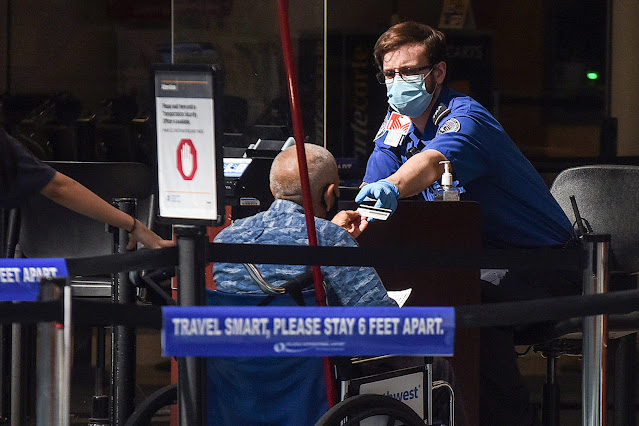Air Travel, Disabilities, And The TSA
(TSA) is to provide the highest level of security and customer service
to all who pass through our screening checkpoints. Our current policies
and procedures focus on ensuring that all passengers, regardless of
their personal situations and needs, are treated equally and with the
dignity, respect, and courtesy they deserve. Although every person and
item must be screened before entering each secure boarding area, it is
the manner in which the screening is conducted that is most important.

In order to achieve that goal, TSA has established a program for
screening of persons with disabilities and their associated equipment,
mobility aids, and devices. Our program covers all categories of
disabilities (mobility, hearing, visual, and hidden). As part of that
program, we established a coalition of over 70 disability-related groups
and organizations to help us understand the concerns of persons with
disabilities and medical conditions. These groups have assisted TSA with
integrating the unique needs of persons with disabilities into our
airport operations.
Since the initial total ban on liquids, gels and aerosols took effect we
have learned enough from the UK investigation to say with confidence
that small, travel size liquids are safe to bring through security
checkpoints in limited numbers. We are confident in our increased
security measures throughout the airport. Therefore, passengers can
purchase drinks in the secure boarding area and bring them aboard their
flights.
TSA's checkpoint security screening procedures for persons with
disabilities and medical conditions have not changed as a result of the
current threat situation. All disability-related equipment, aids, and
devices continue to be allowed through security checkpoints once cleared
through screening.
Additionally, we are continuing to permit prescription liquid
medications and other liquids needed by persons with disabilities and
medical conditions. This includes:
* All prescription and over-the-counter medications (liquids, gels,
and aerosols) including KY jelly, eye drops, and saline solution for
medical purposes;
* Liquids including water, juice, or liquid nutrition or gels for
passengers with a disability or medical condition;
* Life-support and life-sustaining liquids such as bone marrow,
blood products, and transplant organs;
* Items used to augment the body for medical or cosmetic reasons
such as mastectomy products, prosthetic breasts, bras or shells
containing gels, saline solution, or other liquids; and,
* Gels or frozen liquids needed to cool disability or medically
related items used by persons with disabilities or medical conditions.
However, if the liquid medications are in volumes larger than 3 ounces
each, they may not be placed in the quart-size bag and must be declared
to the Transportation Security Officer. A declaration can be made
verbally, in writing, or by a person's companion, caregiver,
interpreter, or family member.
Declared liquid medications and other liquids for disabilities and
medical conditions must be kept separate from all other property
submitted for x-ray screening.
